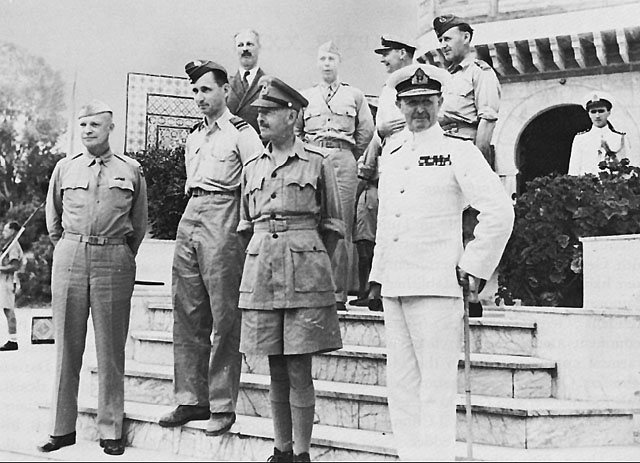|
Cecily Lefort
Cicely Margot Lefort (née Gordon, 30 April 1899 – February 1945) served in the Women's Auxiliary Air Force (WAAF) and in France for the United Kingdom's clandestine Special Operations Executive (SOE) during the Second World War. The purpose of SOE was to conduct espionage, sabotage and reconnaissance in occupied Europe against the Axis powers, especially Nazi Germany. SOE agents allied themselves with French Resistance groups and supplied them with weapons and equipment parachuted in from England. Lefort arrived in France in June 1943 and was a courier, code named "Alice", for SOE's SOE F Section networks, Jockey network (or circuit). She was arrested by the Gestapo in September 1943 and deported to Ravensbrück concentration camp, where she was later executed. Early life Cicely Margot Gordon (often mistakenly called "Cecily") was born in London on 30 April 1899 to Margaret Humble Close Gordon (Lefort gave a decoy maiden name – "MacKenzie" – when she joined SOE). Although ... [...More Info...] [...Related Items...] OR: [Wikipedia] [Google] [Baidu] |
Ravensbrück Concentration Camp
Ravensbrück () was a Nazi concentration camp exclusively for women from 1939 to 1945, located in northern Germany, north of Berlin at a site near the village of Ravensbrück (part of Fürstenberg/Havel). The camp memorial's estimated figure of 132,000 women who were in the camp during the war includes about 48,500 from Poland, 28,000 from the Soviet Union, almost 24,000 from Nazi Germany, Germany and Austria, nearly 8,000 from France, almost 2,000 from Belgium, and thousands from other countries including a few from the United Kingdom and the United States. More than 20,000 (15 percent) of the total were Jewish. More than 80 percent were political prisoners. Many prisoners were employed as slave laborers by Siemens & Halske. From 1942 to 1945, the Nazis undertook Nazi human experimentation, medical experiments on Ravensbrück prisoners to test the effectiveness of Sulfonamide (medicine), sulfonamides. In the spring of 1941, the SS established a small adjacent camp for male inmate ... [...More Info...] [...Related Items...] OR: [Wikipedia] [Google] [Baidu] |
F Section (France)
F, or f, is the sixth letter of the Latin alphabet and many modern alphabets influenced by it, including the modern English alphabet and the alphabets of all other modern western European languages. Its name in English is ''ef'' (pronounced ), and the plural is ''efs''. History The origin of ⟨F⟩ is the Semitic letter '' waw'', which represented a sound like or . It probably originally depicted either a hook or a club. It may have been based on a comparable Egyptian hieroglyph such as that which represented the word ''mace'' (transliterated as ḥ(dj)): T3 The Phoenician form of the letter was adopted into Greek as a vowel, ''upsilon'' (which resembled its descendant ⟨ Y⟩ but was also the ancestor of the Roman letters ⟨ U⟩, ⟨ V⟩, and ⟨ W⟩); and, with another form, as a consonant, ''digamma'', which indicated the pronunciation , as in Phoenician. Latin ⟨F⟩, despite being pronounced differently, is ultimately descended from digamma and closely ... [...More Info...] [...Related Items...] OR: [Wikipedia] [Google] [Baidu] |
Hard Labour
Penal labour is a term for various kinds of forced labour that prisoners are required to perform, typically manual labour. The work may be light or hard, depending on the context. Forms of sentence involving penal labour have included involuntary servitude, penal servitude, and imprisonment with hard labour. The term may refer to several related scenarios: labour as a form of punishment, the prison system used as a means to secure labour, and labour as providing occupation for convicts. These scenarios can be applied to those imprisoned for political, religious, war, or other reasons as well as to criminal convicts. Large-scale implementations of penal labour include labour camps, prison farms, penal colonies, penal military units, penal transportation, or aboard prison ships. Punitive versus productive labour Punitive labour, also known as convict labour, prison labour, or hard labour, is a form of forced labour used in both the past and the present as an additional f ... [...More Info...] [...Related Items...] OR: [Wikipedia] [Google] [Baidu] |
Percival Treite
Perceval (, also written Percival, Parzival, Parsifal), alternatively called Peredur (), is a figure in the legend of King Arthur, often appearing as one of the Knights of the Round Table. First mentioned by the French author Chrétien de Troyes in the tale ''Perceval, the Story of the Grail'', he is best known for being the original hero in the quest for the Grail before being replaced in later literature by Galahad. Etymology and origin The earliest reference to Perceval is found in Chrétien de Troyes's first Arthurian romance ''Erec et Enide'', where, as "Percevaus li Galois" (Percevaus of Wales), he appears in a list of Arthur's knights. In another of Chrétien's romances, '' Cligés'', Perceval is a "renowned vassal" who is defeated by the knight Cligés in a tournament. He then becomes the eponymous protagonist of Chrétien's final romance, ''Perceval, the Story of the Grail''. In the Welsh romance ''Peredur son of Efrawg'', the corresponding figure goes by the name ... [...More Info...] [...Related Items...] OR: [Wikipedia] [Google] [Baidu] |
Allied Invasion Of Sicily
The Allied invasion of Sicily, also known as the Battle of Sicily and Operation Husky, was a major campaign of World War II in which the Allies of World War II, Allied forces invaded the island of Sicily in July 1943 and took it from the Axis powers, Axis forces (Kingdom of Italy and Nazi Germany). It began with a large Amphibious warfare, amphibious and airborne forces, airborne Military operation, operation, followed by a six-week land campaign, and initiated the Italian campaign (World War II), Italian campaign. To divert some of the Axis forces to other areas, the Allies engaged in several deception operations, the most famous and successful of which was Operation Mincemeat. Husky began on the night of 9–10 July 1943 and ended on 17 August. Strategically, Husky achieved the goals set out for it by Allied planners: the Allies drove Axis air, land and naval forces from the island, and the Mediterranean Sea, Mediterranean sea lanes were opened for Allied merchant ships for th ... [...More Info...] [...Related Items...] OR: [Wikipedia] [Google] [Baidu] |
Francis Cammaerts
Francis Charles Albert Cammaerts, DSO (16 June 1916 – 3 July 2006), code named Roger, was an agent of the United Kingdom's clandestine Special Operations Executive (SOE) during World War II. The purpose of SOE was to conduct espionage, sabotage and reconnaissance in occupied Europe and Asia against the Axis powers, especially Nazi Germany. In France, SOE agents allied themselves with French Resistance groups and supplied them with weapons and equipment parachuted in from England. Cammaerts was the creator and the organiser (leader) of the Jockey network (or circuit) in southeastern France in 1943 and 1944. At the beginning of World War II in 1939, Cammaerts declared himself a conscientious objector, but in 1942 he joined the SOE. He recruited and supplied with arms and training a large number of resistance networks and cells over an extensive area east of the Rhone River extending to the border with Italy and north from the Mediterranean Sea to the city of Grenoble. Despi ... [...More Info...] [...Related Items...] OR: [Wikipedia] [Google] [Baidu] |
Vera Atkins
Vera May Atkins (15 June 1908 – 24 June 2000) was a Romanian-born British intelligence officer who worked in the France Section of the Special Operations Executive (SOE) from 1941 to 1945 during the Second World War. Early life Atkins was born Vera May Rosenberg in Galați, Kingdom of Romania, to Max Rosenberg (d. 1932), a German-Jewish father, and his British-Jewish wife, Zefra Hilda, known as Hilda (d. 1947). She had two brothers. Atkins briefly attended the Sorbonne in Paris to study modern languages and a finishing school at Lausanne, where she indulged her passion for skiing, before training at a secretarial college in London. Atkins' father, a wealthy businessman on the Danube Delta, went bankrupt in 1932 and died a year after. Atkins remained with her mother in Romania until emigrating to Great Britain in 1937, a move made in response to the threatening political situation in mainland Europe. During her somewhat-gilded youth in Romania, where Atkins lived on the l ... [...More Info...] [...Related Items...] OR: [Wikipedia] [Google] [Baidu] |
Henri Dericourt
Henri is the French form of the masculine given name Henry, also in Estonian, Finnish, German and Luxembourgish. Bearers of the given name include: People French nobles * Henri I de Montmorency (1534–1614), Marshal and Constable of France * Henri I, Duke of Nemours (1572–1632), the son of Jacques of Savoy and Anna d'Este * Henri II, Duke of Nemours (1625–1659), the seventh Duc de Nemours * Henri, Count of Harcourt (1601–1666), French nobleman * Henri, Dauphin of Viennois (1296–1349), bishop of Metz * Henri de Gondi (other) * Henri de La Tour d'Auvergne, Duke of Bouillon (1555–1623), member of the powerful House of La Tour d'Auvergne * Henri Emmanuel Boileau, baron de Castelnau (1857–1923), French mountain climber * Henri, Grand Duke of Luxembourg (born 1955), the head of state of Luxembourg * Henri de Massue, Earl of Galway (1648–1720), French Huguenot soldier and diplomat, one of the principal commanders of Battle of Almansa * François-Henri de Montm ... [...More Info...] [...Related Items...] OR: [Wikipedia] [Google] [Baidu] |
Loire Valley
The Loire Valley (, ), spanning , is a valley located in the middle stretch of the Loire river in central France, in both the administrative regions Pays de la Loire and Centre-Val de Loire. The area of the Loire Valley comprises about . It is referred to as the ''Cradle of the French'' and the ''Garden of France'' due to the abundance of vineyards, fruit orchards (such as cherries), and artichoke, and asparagus fields, which line the banks of the river. Notable for its historic towns, architecture, and wines, the valley has been inhabited since the Middle Palaeolithic period. In 2000, UNESCO added the central part of the Loire River valley to its list of World Heritage Sites. Geography and climate The valley includes historic towns such as Amboise, Angers, Blois, Chinon, Montsoreau, Orléans, Saumur, and Tours. The climate is favorable most of the year, the river often acting as a line of demarcation in France's weather between the northern climate and the southern. The riv ... [...More Info...] [...Related Items...] OR: [Wikipedia] [Google] [Baidu] |




